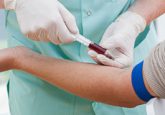Dried blood spots, pharmacokinetic studies and better medicines for children

Determining circulating drug concentrations in children is an ongoing obstacle to the development of age-appropriate dosing regimens. The requirement for small blood sample volumes in children compared with adults is a significant barrier to obtaining age-specific pharmacokinetic–pharmacodynamic data for this population and hence optimizing the efficacy and safety profile of medicines used by this group. This article discusses the potential for dried blood spot sampling to offer a solution to this issue. Quantification of analytes from blood spotted onto cards has a long-standing pedigree in screening for inherited diseases affecting newborn infants [1]. More recently, there has been growing interest...






